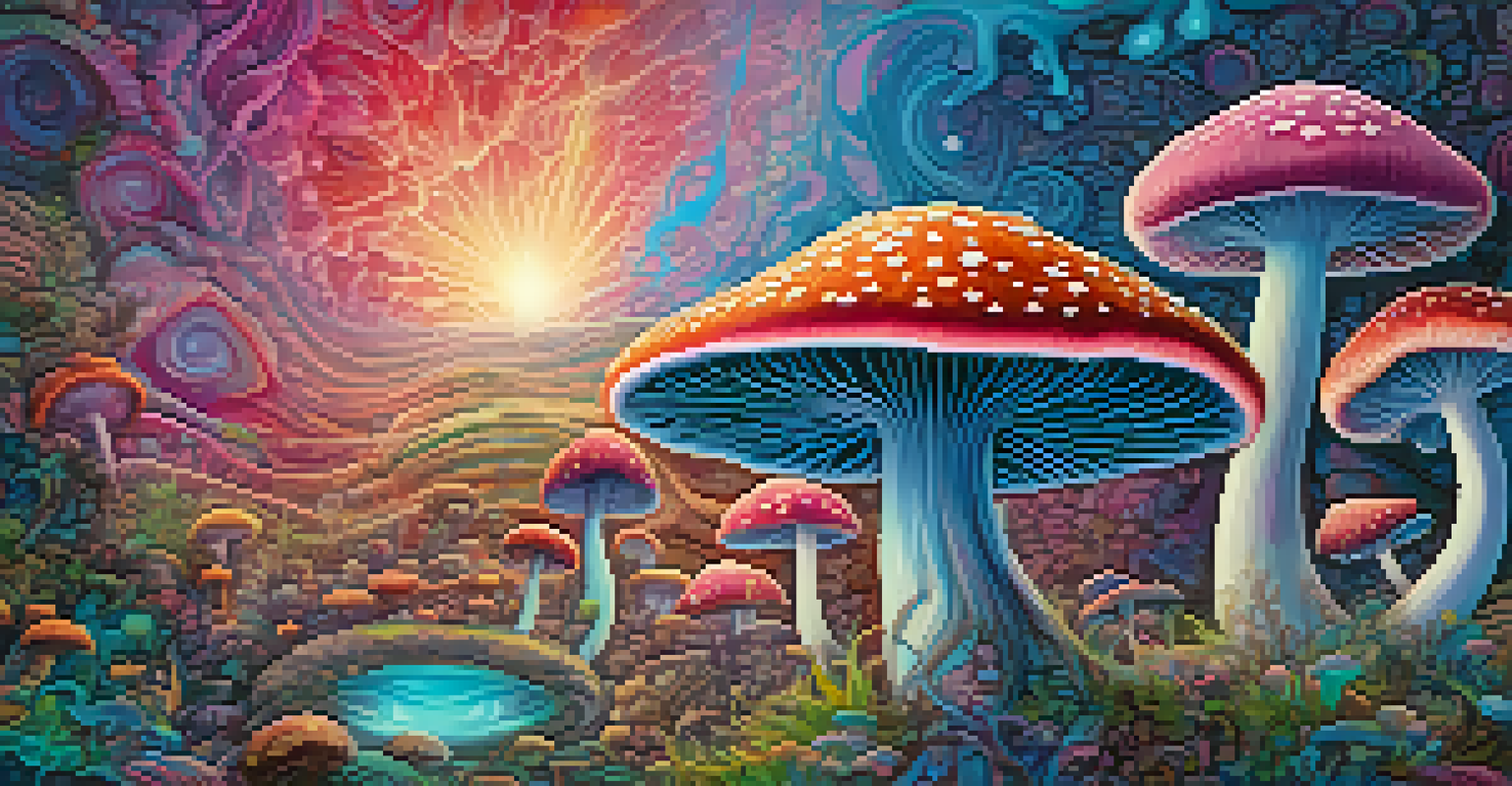Case Studies: Healing Addiction with Entheogenic Therapy

Understanding Entheogenic Therapy and Its Roots
Entheogenic therapy refers to the use of naturally occurring substances, like psychedelics, to facilitate healing and personal growth. This approach has deep historical roots in various indigenous cultures, where these substances were used in spiritual ceremonies. By tapping into altered states of consciousness, individuals can gain insights that may help them confront and heal from addiction.
Psychedelics can help heal the wounds of addiction by providing a new perspective and a sense of connectedness.
In recent years, the resurgence of interest in psychedelics has sparked scientific research into their therapeutic potentials. Studies have shown promising results in treating various mental health conditions, including addiction. This evolving field invites a reevaluation of how we understand substance use and recovery.
As we delve into case studies, we'll see how entheogenic therapy is not just about the substances themselves, but also about the therapeutic context in which they are used. The integration of supportive environments and skilled facilitators plays a crucial role in the healing process.
Case Study: Psilocybin in Alcohol Addiction Treatment
One of the most notable case studies involves the use of psilocybin, the active compound in magic mushrooms, to treat alcohol use disorder. In a clinical trial, participants received psilocybin alongside psychotherapy. The results indicated significant reductions in drinking behavior and cravings, showcasing the potential of this combination.

Participants often reported profound experiences during their sessions, which led to new perspectives on their addiction. For many, these experiences facilitated emotional breakthroughs that traditional therapies had not achieved. It’s a vivid reminder of how a shift in consciousness can pave the way for healing.
Entheogenic Therapy for Healing
Entheogenic therapy utilizes psychedelics in therapeutic settings to facilitate healing and personal growth, drawing on historical practices from indigenous cultures.
Moreover, the follow-up periods showed that these effects were not just temporary; many participants maintained reduced drinking levels long after their sessions. This highlights the long-term potential of entheogenic therapy in fostering sustainable recovery.
Case Study: Ayahuasca and Opioid Dependence
Another compelling case study involves the use of ayahuasca, a brew made from Amazonian plants, in treating opioid addiction. Participants in an ayahuasca retreat reported intense emotional and psychological experiences that helped them confront their addiction. The ceremonial aspect of this experience also contributed to a sense of community and support.
The therapeutic potential of psychedelics lies in their ability to catalyze profound personal insights and emotional breakthroughs.
The results were striking; many participants experienced a dramatic reduction in cravings and an increased sense of purpose in their lives. This aligns with anecdotal evidence suggesting that ayahuasca can facilitate deep personal insights, which are crucial in overcoming the cycle of addiction.
These transformations often come with a renewed connection to oneself and others, fostering resilience against relapse. As we explore these stories, we see a clear theme: entheogenic therapy can provide a unique lens through which individuals can view their addiction and recovery journey.
Exploring the Therapeutic Framework of Entheogenic Therapy
The success of entheogenic therapy lies not just in the substances used, but in the therapeutic framework that surrounds them. Trained facilitators guide participants through their journeys, ensuring a safe environment for exploration. This supportive structure is crucial, as it helps individuals process their experiences in a meaningful way.
Integration sessions following the experience are equally important. These sessions allow participants to reflect on their insights and how they can apply them to their daily lives. This step is vital for translating psychedelic experiences into tangible changes in behavior and mindset.
Promising Case Studies
Case studies involving psilocybin and ayahuasca demonstrate significant reductions in addiction-related behaviors, highlighting the transformative potential of these substances.
The combination of preparation, the experience itself, and integration creates a holistic approach to addiction recovery. It emphasizes the importance of community and support, making the journey less isolating and more collaborative.
Challenges and Considerations in Entheogenic Therapy
While the potential of entheogenic therapy is promising, it’s essential to acknowledge the challenges and considerations involved. Not everyone responds to psychedelics in the same way; some may experience anxiety or discomfort during their sessions. Therefore, careful screening and preparation are necessary to ensure participants are suitable candidates for this type of therapy.
Additionally, the legal status of many entheogenic substances poses significant hurdles. In many regions, these substances are still classified as illegal, which limits access for those who might benefit. This legal landscape is slowly changing, but advocates for entheogenic therapy highlight the need for more research and regulated access.
Ethical considerations also come into play, especially in ensuring that vulnerable populations are treated with respect and care. As with any therapeutic intervention, the focus must remain on the well-being and autonomy of the individual.
The Future of Entheogenic Therapy in Addiction Treatment
Looking ahead, the future of entheogenic therapy in addiction treatment appears promising yet requires careful navigation. As research continues to expand, there’s a growing recognition of the need for integrative approaches that combine traditional therapies with entheogenic experiences. This could lead to more effective treatment protocols tailored to individual needs.
Furthermore, as public perception shifts, more people are beginning to advocate for the therapeutic use of psychedelics. This movement is gaining traction among mental health professionals and policymakers, which may lead to broader acceptance and integration into standard treatment practices.
Importance of Integration Support
The therapeutic framework surrounding entheogenic therapy, including trained facilitators and integration sessions, is crucial for translating psychedelic experiences into meaningful recovery.
Ultimately, the goal is to destigmatize addiction treatment and provide diverse options for recovery. As we embrace these new perspectives, we open the door to innovative solutions that could transform the landscape of addiction therapy.
Personal Stories: Voices of Transformation
Personal stories can be incredibly powerful in illustrating the impact of entheogenic therapy on addiction. Many individuals have shared their journeys of transformation, recounting how these experiences helped them break free from the grips of addiction. Their narratives often highlight moments of clarity and connection that were pivotal in their recovery.
For example, one participant described a profound realization during their ayahuasca session, where they confronted the pain underlying their substance use. This moment became a turning point, leading them to seek support and rebuild their life. Such stories remind us that recovery is deeply personal and often requires exploring the emotional roots of addiction.

These voices of transformation not only inspire hope but also emphasize the importance of sharing experiences within a supportive community. As more individuals come forward with their stories, they contribute to a growing narrative that supports the efficacy of entheogenic therapy.